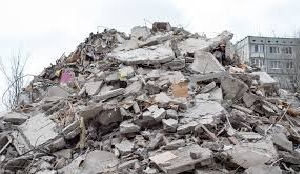Eight trucks, each carrying 23 tonnes of debris, were the first on Sunday to start clearing the huge mass of concrete and steel that the demolition of the Supertech twin towers had created.
Officials of the demolition company, Edifice Engineering, said the trucks transported the debris from Sector 93A, where the towers had once stood, to the C&D plant in Sector 80 of Noida.
On the orders of the Supreme Court, the twin towers – Apex (32 floors) and Ceyane (29 floors) – were demolished on August 28 at 2.30pm, leaving behind 80,000 tonnes of debris. Of the total, over 48,000 tonnes of the debris will be used to fill the basement and the surroundings. About 28,000 tonnes of it will be sent to the plant, which is being run by Noida Authority and a private company.
The mammoth exercise to clear the demolition site and level the ground is expected to take at least three months.
Though it is the responsibility of Edifice to transport the debris, the developer, Supertech, will bear the cost of processing the debris at the plant located some 10km from the demolition site.
“Over 180 tonnes of debris were segregated and broken into small blocks before being sent to the plant. This process will now continue every day,” said Mayur Mehta, project manager, Edifice Engineering. Over 4,000 tonnes of steel and iron bars that are retrieved during the segregation process would be sold by the demolition company to recover some costs.
On the issue of dust pollution caused by segregation, Mehta said they have deployed four sprinklers at the demolition site and three more would be added soon.
During a review meeting last week at the Noida Authority office, RWAs of Emerald Court and ATS Greens Village – which flanked the twin towers on either side – had raised the issue of dust and noise pollution in the area.
The Noida Authority had subsequently ordered a series of measures to be employed by Edifice. Additionally, the Central Building Research Institute (CBRI), the expert monitoring body appointed by the top court, and the pollution department were asked to suggest methods by September 15 to reduce noise pollution while breaking the debris. Some of the suggestions CBRI gave was to reduce the number of breakers the site and check noise levels.
Mehta said a study was conducted at eight locations in and around the demolition site. “According to the report, the minimum ambience noise level was 64 decibels (dB) without machines at the site, while the maximum was 89dB with all eight machines working. Noise level was around 70dB near boundary walls,” he said.

